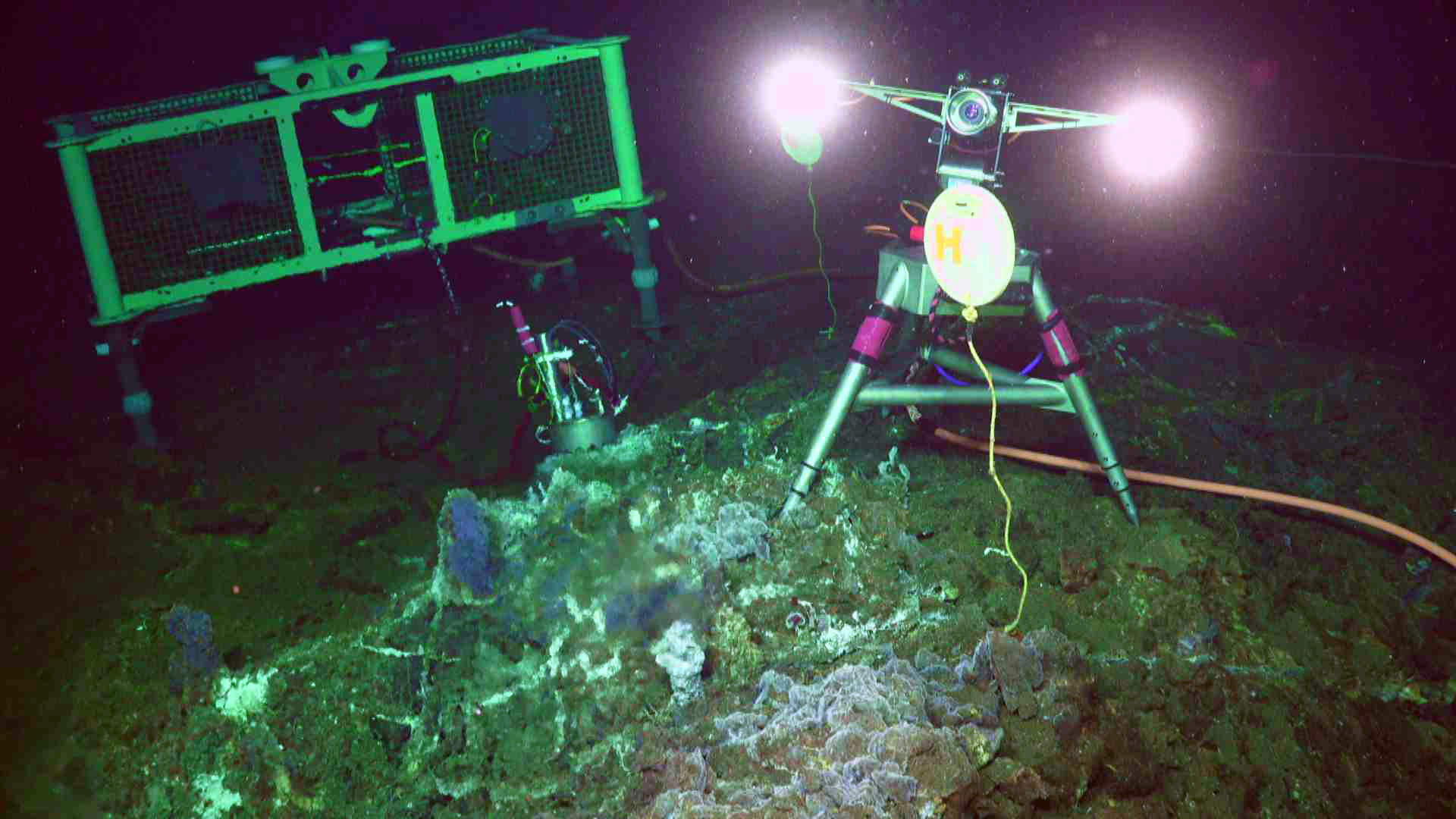
The International District is located on the southeastern fissure system just outboard from the southeastern boundary fault. It is an area of rugged topography with lobate, pillow and sheet flows, and wide areas of hackly flows. The area is bounded to the west by expansive collapse zones and lava channels, and to the north by numerous 10’s of meter-tall constructional highs. Extinct chimneys on the edges of the field are wrapped by lava flows that post-date chimney formation. The field hosts the tallest chimneys at Axial, with El Guapo (the handsome one) reaching ~ 16 m in height. Also present within the field are abundant extinct sulfide deposits that include a 9-m tall chimney and significant sulfide talus and debris. Many of the chimneys host well developed flanges.

Hydrothermal activity is typically most intense near the tops of the chimneys and it is commonly marked by small, highly friable spigots. On El Guapo, these jet clear fluids that resemble underwater “fire”. Diffuse flow sites occur at the base of the chimneys and along steep sided slopes (e.g., near base of Escargo). These sites host dense patches of blue colonial ciliate mats, tube and palm worms, limpets, squat lobsters and abundant sea spiders (Pycnogonida).
Historically, numerous chimneys within the Axial system have emitted boiling fluids that are high in magmatic CO2 (>150 mmol/kg) (Butterfield et al., 1990, 2004), consistent with the high CO2 concentrations of the basaltic melts (Helo et al., 2012). High-temperature fluids depleted in chloride, reflect boiling within this relatively shallow system (Butterfield et al. 1990). El Guapo was profoundly impacted by the 2011 eruption. During the first three months of 2011, El Guapo was venting 347°C boiling fluids. Shortly after the April eruption, vent temperatures had only dropped a few degrees. However, by May 11, 2011, temperatures were at 283°C, and by August 1, when the temperature sensor was removed from inside the orifice, the vent fluid temperatures were 211°C.

A temperature-resistivity sensor, with its wand now embedded in a sulfate-rich chimney sends real-time data to shore from the Escargot chimney, 5000 ft beneath the oceans’ surface and >300 miles offshore. Credit. UW/OOI-NSF/WHOI; Dive J2-912, V16.
Because the International District is the largest hydrothermal field and located near the eastern fissure network, it was chosen as the site to focus on both high- and low-temperature venting processes. Here, some of the most technologically advanced instrumentation is located, including a mass spectrometer to measure the volatile chemistry of diffuse fluids, adaptive diffuse fluid (major and trace element chemistry) and microbial DNA samplers, and two instruments to measure high-temperature vent fluid and volatile chemistry (a temperature-resistivity sensor in Escargot and a temperature-pH-H2S instrument in Diva. A digital still camera provides imaging at Tiny Villiage site, concomittant with mass spectrometer measurements, and coupled diffuse fluid and microbial DNA sampling, as well as temperature. A seismometer, bottom-pressure tilt instrument, and current meter are located nearby.
























